Properties of Barium Cerate Thin Films Formed Using E-Beam Deposition
Abstract
:1. Introduction
2. Materials and Methods
3. Results and Discussion
3.1. Morphology and Phase Composition
3.2. Mechanical Properties
3.3. Electrical Properties
4. Conclusions
Author Contributions
Funding
Conflicts of Interest
References
- Jeong, S.; Yamaguchi, T.; Okamoto, M.; Zhu, C.; Habazaki, H.; Nagayama, M.; Aoki, Y. Proton Pumping Boosts Energy Conversion in Hydrogen-Permeable Metal-Supported Protonic Fuel Cells. ACS Appl. Energy Mater. 2019, 3, 1222–1234. [Google Scholar] [CrossRef] [Green Version]
- Dogdibegovic, E.; Wang, R.; Lau, G.Y.; Karimaghaloo, A.; Lee, M.H.; Tucker, M.C. Progress in durability of metal-supported solid oxide fuel cells with infiltrated electrodes. J. Power Sources 2019, 437. [Google Scholar] [CrossRef] [Green Version]
- Shao, X.; Nilius, N.; Myrach, P.; Freund, H.-J.; Martinez, U.; Prada, S.; Giordano, L.; Pacchioni, G. Strain-induced formation of ultrathin mixed-oxide films. Phys. Rev. B 2011, 83, 2–6. [Google Scholar] [CrossRef] [Green Version]
- Tuller, H.L.; Bishop, S.R. Point Defects in Oxides: Tailoring Materials Through Defect Engineering. Annu. Rev. Mater. Res. 2011, 41, 369–398. [Google Scholar] [CrossRef]
- Wen, K.; Lv, W.; He, W. Interfacial lattice-strain effects on improving the overall performance of micro-solid oxide fuel cells. J. Mater. Chem. A 2015, 3, 20031–20050. [Google Scholar] [CrossRef]
- Shi, Y.; Lee, S.C.; Monti, M.; Wang, C.; Feng, Z.A.; Nix, W.D.; Toney, M.F.; Sinclair, R.; Chueh, W.C. Growth of Highly Strained CeO2 Ultrathin Films. ACS Nano 2016, 10, 9938–9947. [Google Scholar] [CrossRef]
- Fluri, A.; Marcolongo, A.; Roddatis, V.; Wokaun, A.; Pergolesi, D.; Marzari, N.; Lippert, T. Enhanced Proton Conductivity in Y-Doped BaZrO3 via Strain Engineering. Adv. Sci. 2017, 4, 1700467. [Google Scholar] [CrossRef]
- Løken, A.; Ricote, S.; Wachowski, S.L. Thermal and Chemical Expansion in Proton Ceramic Electrolytes and Compatible Electrodes. Crystals 2018, 8, 365. [Google Scholar] [CrossRef] [Green Version]
- Boukamp, B.A. A Nonlinear Least Squares Fit procedure for analysis of immittance data of electrochemical systems. Solid State Ionics 1986, 20, 31–44. [Google Scholar] [CrossRef] [Green Version]
- Chang, I.; Paek, J.Y.; Cha, S.-W. Parametric study of Y-doped BaZrO3 thin film deposited via pulsed laser deposition. J. Vac. Sci. Technol. A 2015, 33, 21515. [Google Scholar] [CrossRef]
- Abermann, R. Measurements of the intrinsic stress in thin metal films. Vaccum 1990, 41, 1279–1282. [Google Scholar] [CrossRef]
- Petrov, I.; Barna, P.B.; Hultman, L.; Greene, J.E. Microstructural evolution during film growth. J. Vac. Sci. Technol. A 2003, 21, S117–S128. [Google Scholar] [CrossRef]
- Barna, P.; Adamik, M. Fundamental structure forming phenomena of polycrystalline films and the structure zone models. Thin Solid Film. 1998, 317, 27–33. [Google Scholar] [CrossRef]
- Greene, J.E. Thin Film Nucleation, Growth, and Microstructural Evolution: An Atomic Scale View. In Handbook of Deposition Technologies for Films and Coatings; Martin, P.M., Ed.; William Andrew Publishing: Boston, MA, USA, 2010; pp. 554–620. [Google Scholar] [CrossRef]
- Evans, J.W.; Thiel, P.; Bartelt, M. Morphological evolution during epitaxial thin film growth: Formation of 2D islands and 3D mounds. Surf. Sci. Rep. 2006, 61, 1–128. [Google Scholar] [CrossRef]
- Metiu, H.; Lu, Y.-T.; Zhang, Z. Epitaxial Growth and the Art of Computer Simulations. Science 1992, 255, 1088–1092. [Google Scholar] [CrossRef] [PubMed]
- Kaiser, N. Review of the fundamentals of thin-film growth. Appl. Opt. 2002, 41, 3053–3060. [Google Scholar] [CrossRef] [PubMed]
- Yamanaka, S.; Fujikane, M.; Hamaguchi, T.; Muta, H.; Oyama, T.; Matsuda, T.; Kobayashi, S.-I.; Kurosaki, K. Thermophysical properties of BaZrO3 and BaCeO3. J. Alloys Compd. 2003, 359, 109–113. [Google Scholar] [CrossRef]
- Knuyt, G.; Quaeyhaegens, C.; D’Haen, J.; Stals, L. A quantitative model for the evolution from random orientation to a unique texture in PVD thin film growth. Thin Solid Films 1995, 258, 159–169. [Google Scholar] [CrossRef]
- Glavee, G.; Hunt, R.; Paranthaman, M. Low temperature preparation of BaCeO3 and Ce0.75Zr0.25O2 thin films using sol-gel processing techniques. Mater. Res. Bull. 1999, 34, 817–825. [Google Scholar] [CrossRef]
- Pharr, C.M.; Oliver, W.C. Measurement of Thin Film Mechanical Properties Using Nanoindentation. MRS Bull. 1992, 17, 28–33. [Google Scholar] [CrossRef]
- Karlsson, L.; Hultman, L.; Sundgren, J.-E. Influence of residual stresses on the mechanical properties of TiCxN1–x (x = 0, 0.15, 0.45) thin films deposited by arc evaporation. Thin Solid Films 2000, 371, 167–177. [Google Scholar] [CrossRef]
- Shima, D.; Haile, S.M. The influence of cation non-stoichiometry on the properties of undoped and gadolinia-doped barium cerate. Solid State Ion. 1997, 97, 443–455. [Google Scholar] [CrossRef]
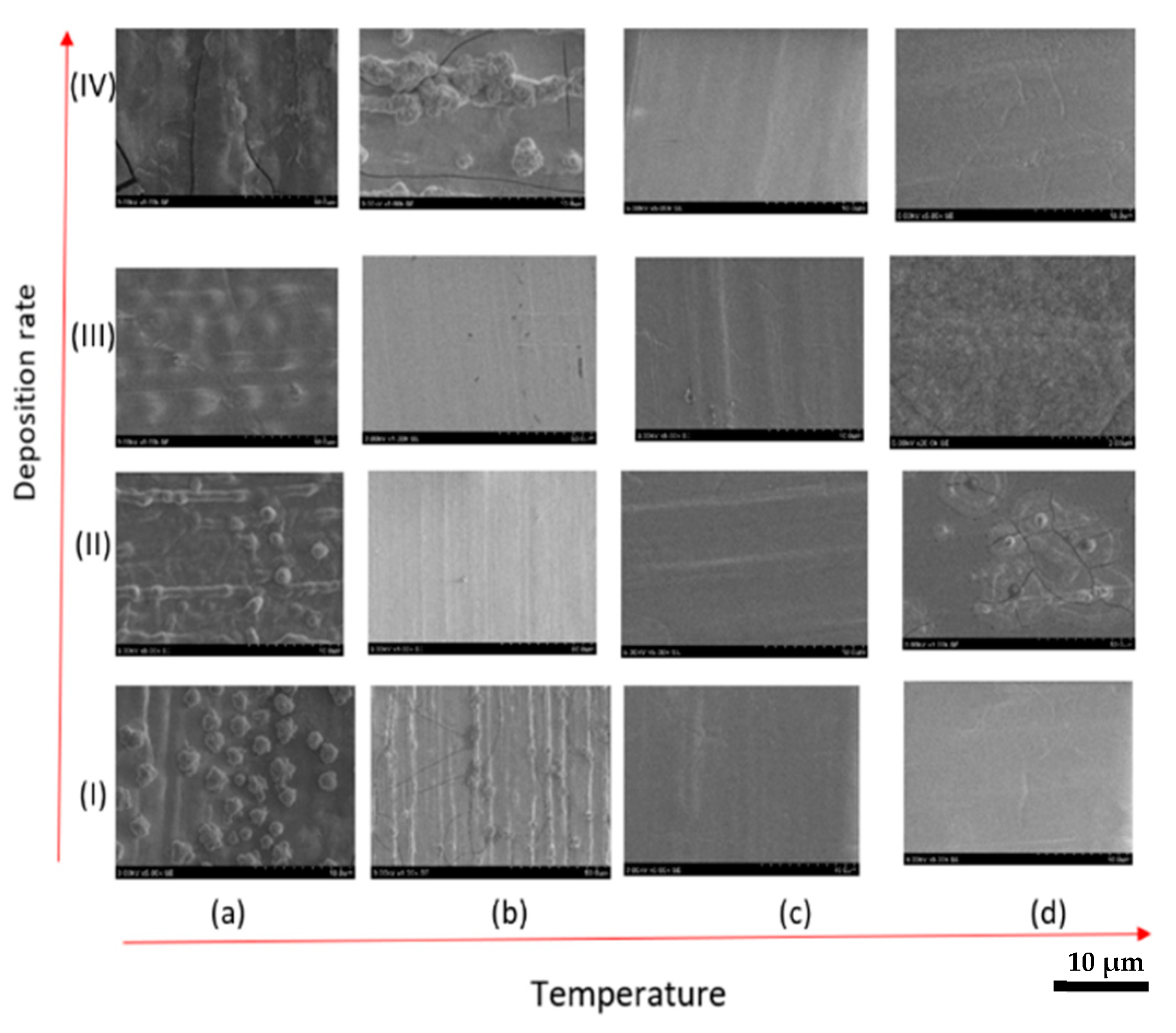

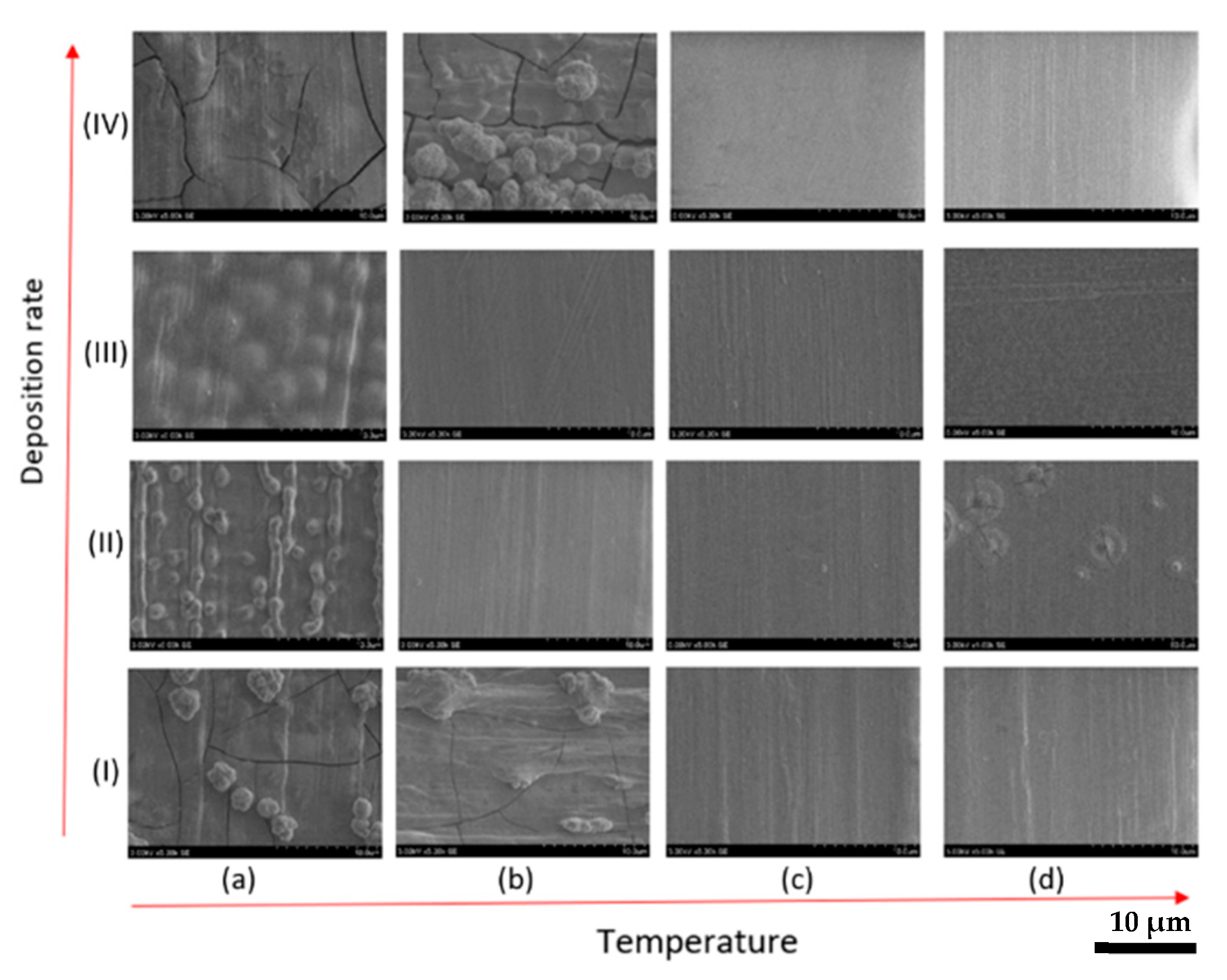
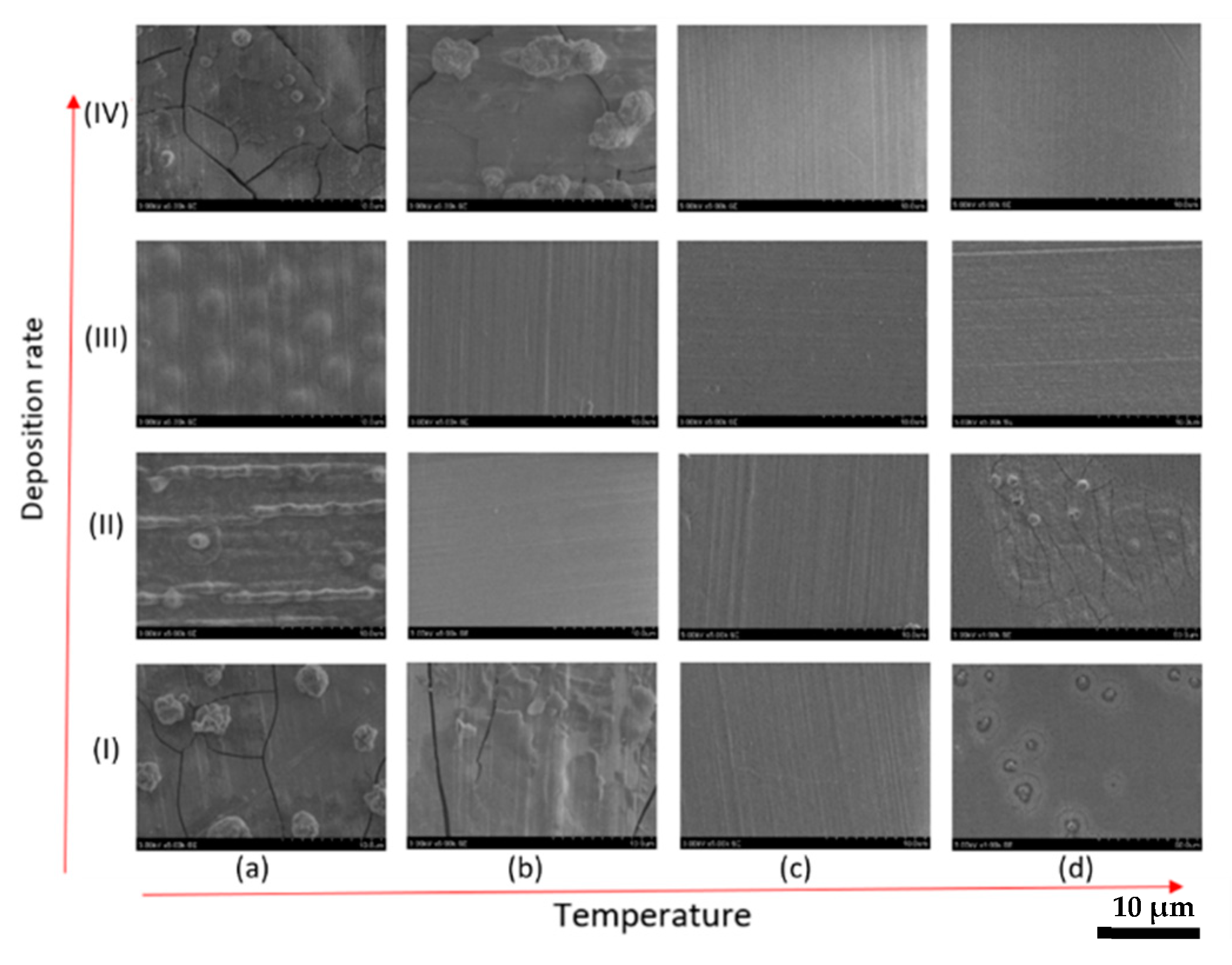
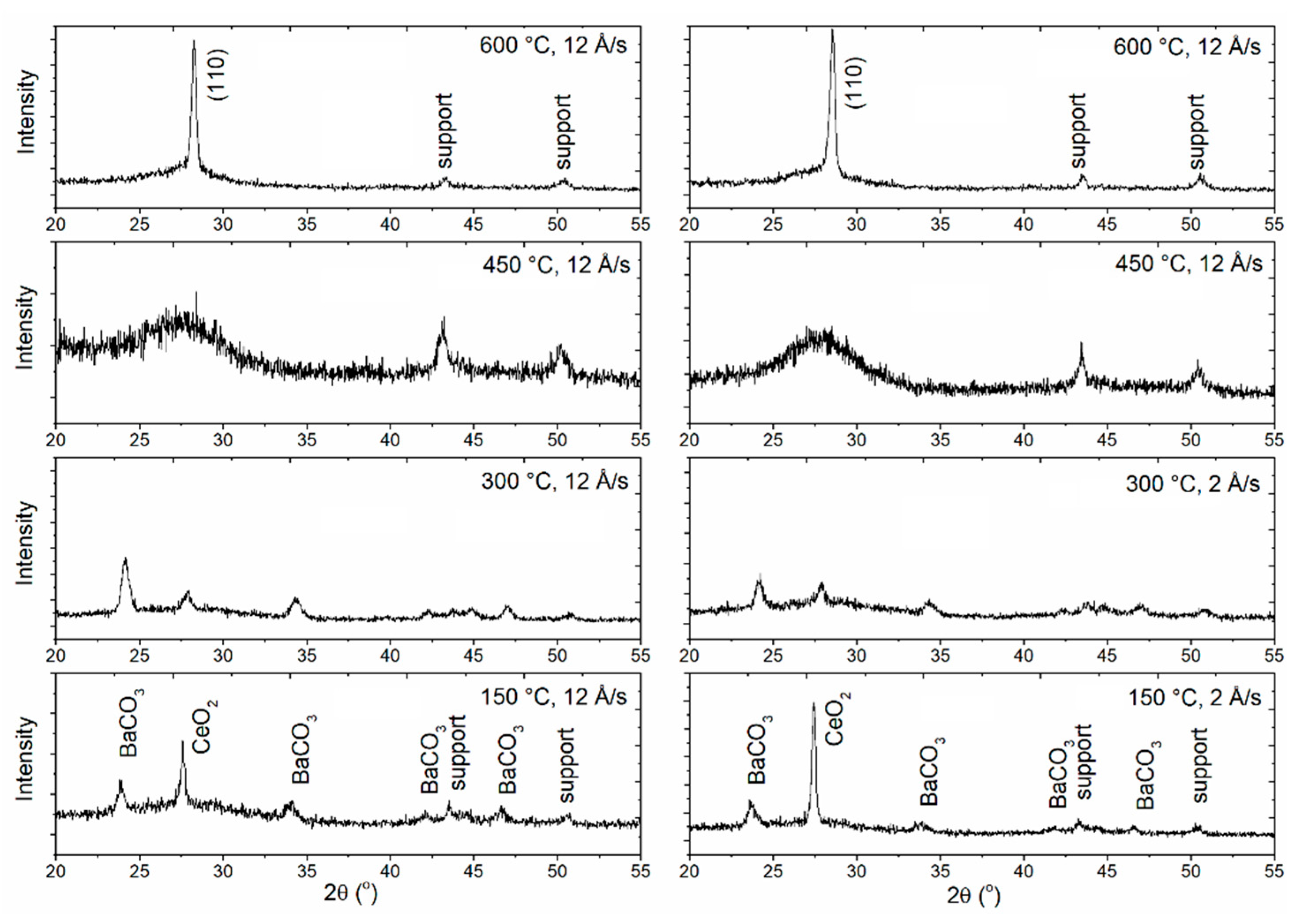

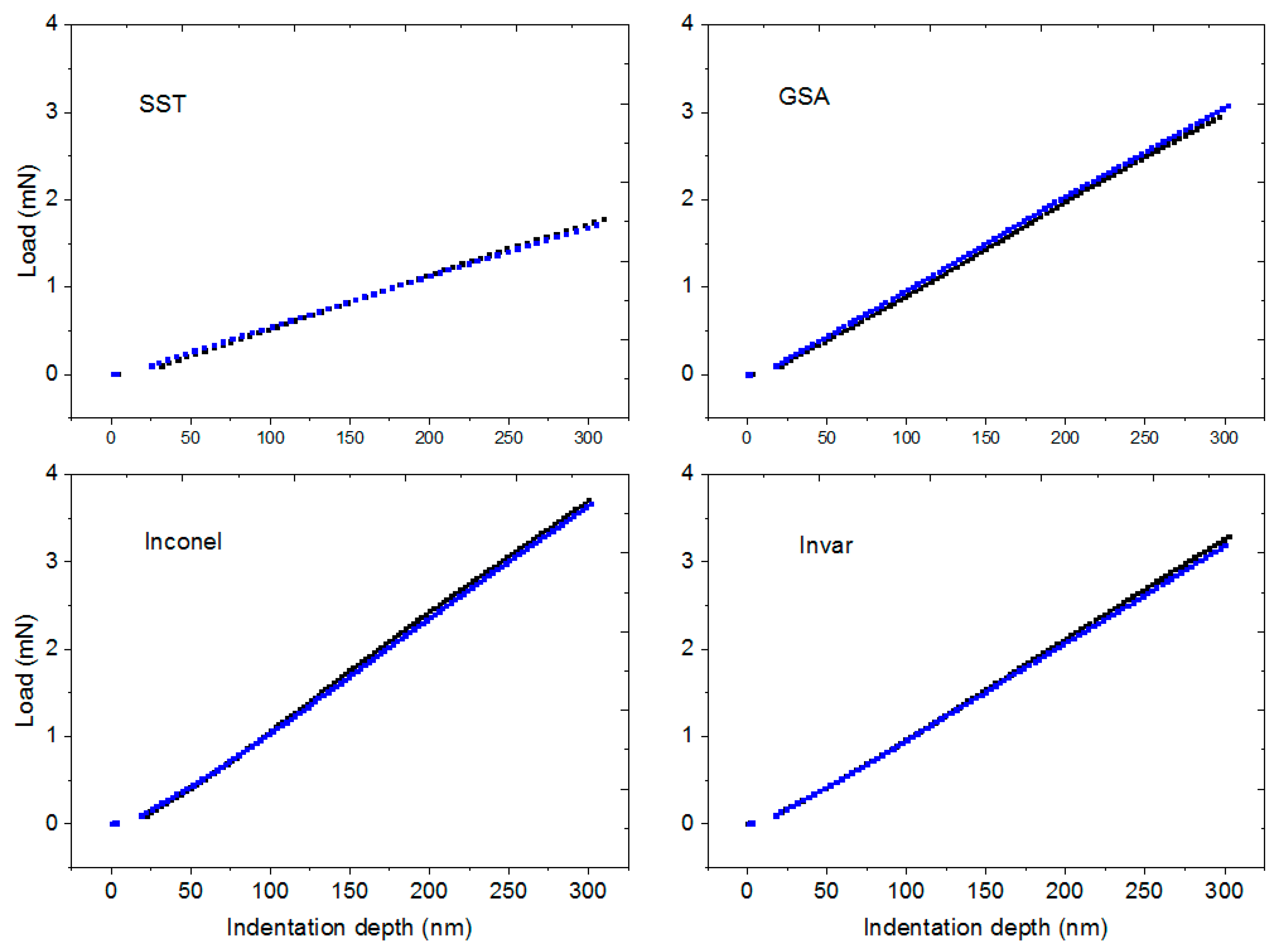
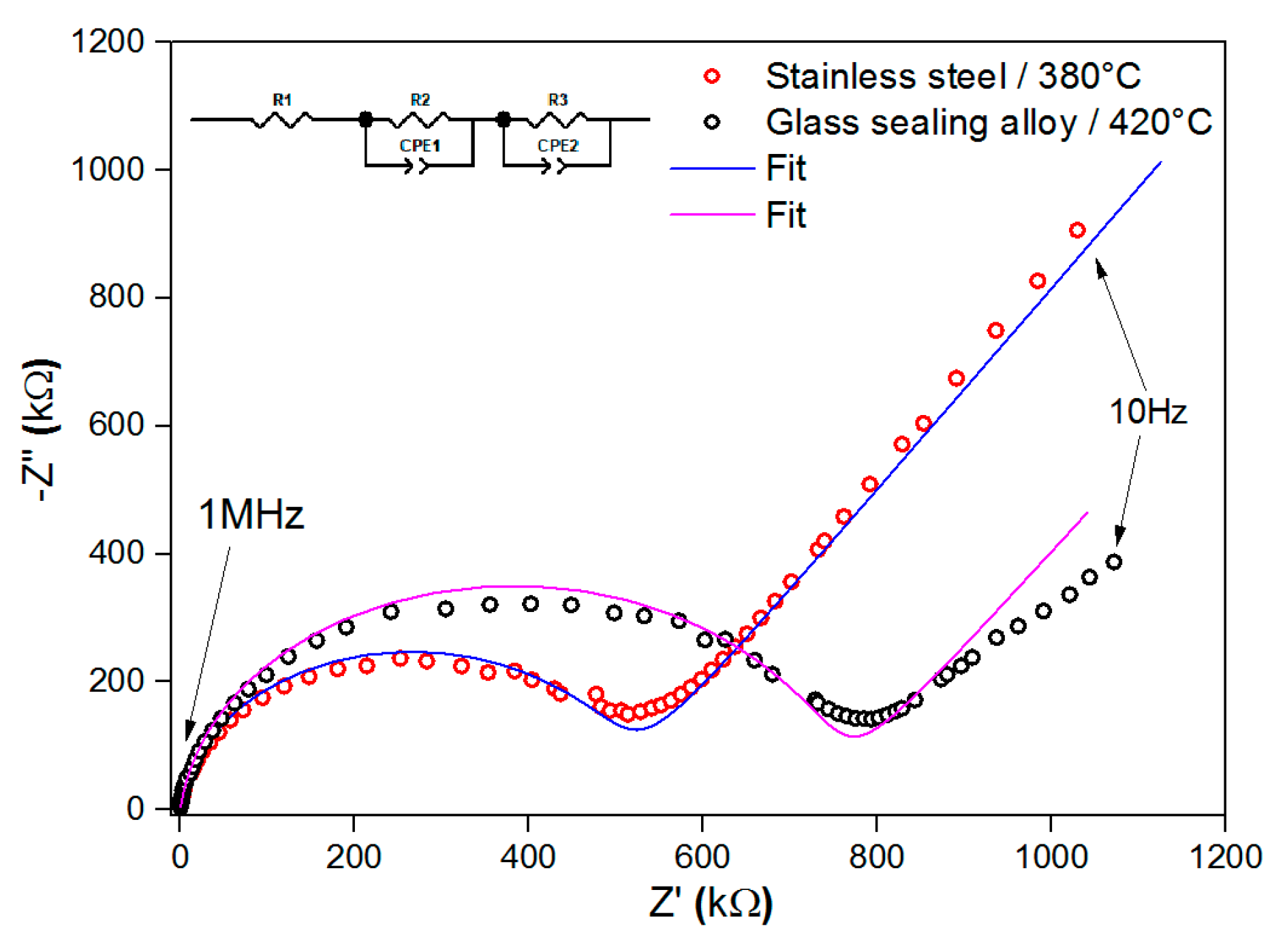
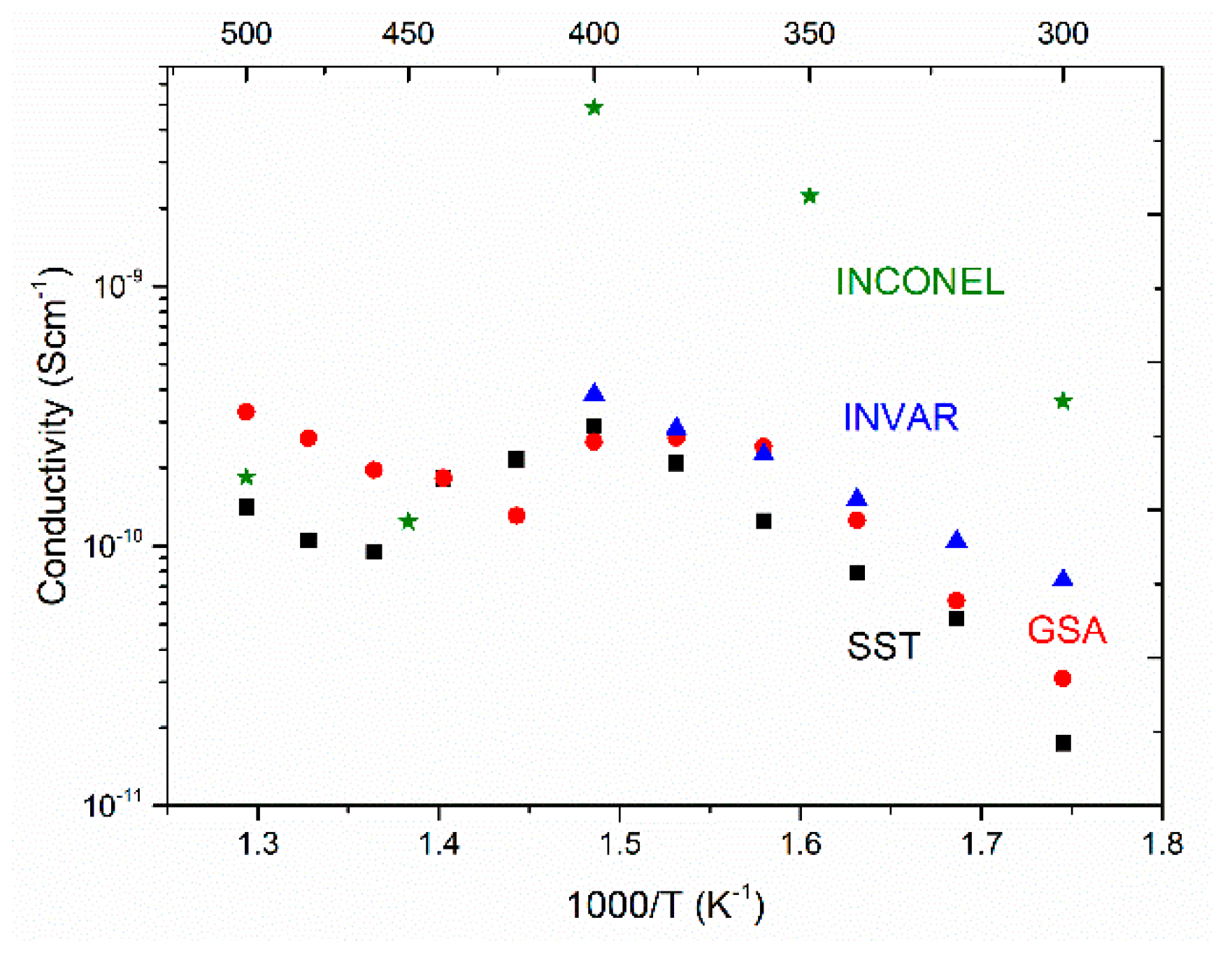
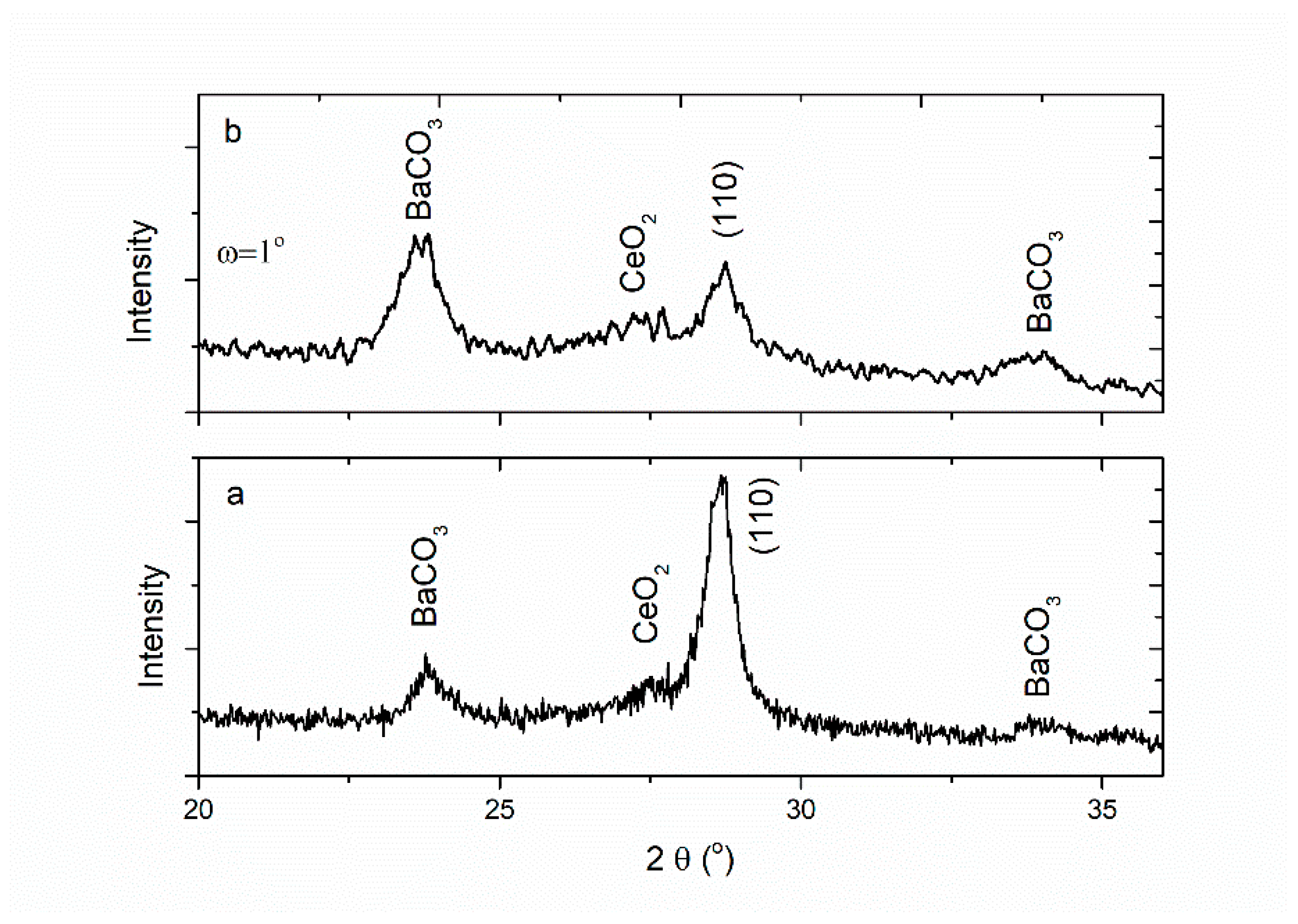
| Substrate | Thermal Expansion Coefficient (TEC), 10−6·K−1 | Chemical Composition |
|---|---|---|
| Invar | 1.7–2.0 | Fe, 64% Ni, 36% May have traces of Mn, Si, and C |
| Glass sealing alloy (GSA) | 4.8 | Fe, 54% Ni, 29% Co, 17% May have traces of Cu, Mn, Si, and C |
| Inconel alloy 600 | 11.5–13.3 | Fe, 8% Ni, 72% Cr, 16% May have traces of Cu, Mn, Si, C, and S |
| Stainless steel (SST) | 18 | Fe, 73% Ni, 7% Cr, 17% Mn, 2% Si, 1% May have traces of P, S, C, and N |
| BaCeO3 | 11.2 [8] |
| Substrate | Type of the in-Plane Strain | σ (350 °C, Dry Ar) (S/cm) × 10−10 | EA (eV) | Degradation Onset Temperature (°C) |
|---|---|---|---|---|
| Invar | tensile | 1.9 | 0.6 | 400 |
| Glass sealing alloy (GSA) | tensile | 2.2 | 1.13 | 360 |
| Inconel alloy 600 | quasi not strained | 22 | 0.9 | 400 |
| Stainless steel (SST) | compressive | 1.0 | 0.95 | 400 |
Publisher’s Note: MDPI stays neutral with regard to jurisdictional claims in published maps and institutional affiliations. |
© 2020 by the authors. Licensee MDPI, Basel, Switzerland. This article is an open access article distributed under the terms and conditions of the Creative Commons Attribution (CC BY) license (http://creativecommons.org/licenses/by/4.0/).
Share and Cite
Campos Covarrubias, M.S.; Sriubas, M.; Bockute, K.; Winiarz, P.; Miruszewski, T.; Skubida, W.; Jaworski, D.; Bartmański, M.; Szkodo, M.; Gazda, M.; et al. Properties of Barium Cerate Thin Films Formed Using E-Beam Deposition. Crystals 2020, 10, 1152. https://doi.org/10.3390/cryst10121152
Campos Covarrubias MS, Sriubas M, Bockute K, Winiarz P, Miruszewski T, Skubida W, Jaworski D, Bartmański M, Szkodo M, Gazda M, et al. Properties of Barium Cerate Thin Films Formed Using E-Beam Deposition. Crystals. 2020; 10(12):1152. https://doi.org/10.3390/cryst10121152
Chicago/Turabian StyleCampos Covarrubias, Monica Susana, Mantas Sriubas, Kristina Bockute, Piotr Winiarz, Tadeusz Miruszewski, Wojciech Skubida, Daniel Jaworski, Michał Bartmański, Marek Szkodo, Maria Gazda, and et al. 2020. "Properties of Barium Cerate Thin Films Formed Using E-Beam Deposition" Crystals 10, no. 12: 1152. https://doi.org/10.3390/cryst10121152






